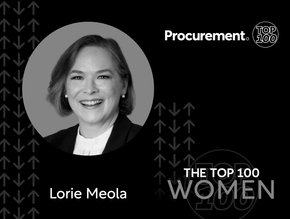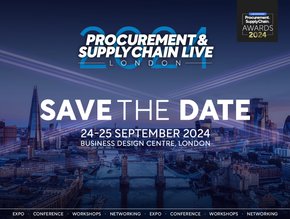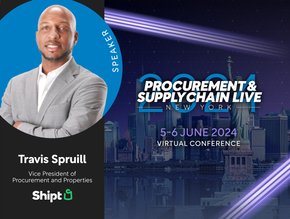COP28: Why suppliers are critical for net-zero

Anthony Payne, chief marketing officer of HICX, explains to Procurement Magazine why we won't reach net-zero unless suppliers and manufacturers fix data collection.
Net-zero journey for business
Why are suppliers, procurement teams and manufacturers so critical in the journey towards net-zero?
With the arrival of COP28, large manufacturing brands are in the net zero spotlight. It’s been a year since the UN Expert Group released Integrity Matters, a report clarifying the exact metrics brands must meet if they wish to claim net zero success. Those planning to do so, account for around half of the world’s largest listed companies, according to the latest Stocktake, a number which has doubled in the last 2.5 years. Despite this momentum, however, brands are slow to implement.
Now, with the conference marking another year closer to the 2050 Paris Agreement and other deadlines, it’s time to step up delivery. What this means is that the strategies behind net zero pledges need a boost.
As a supplier experience evangelist and a marketer, I view this challenge through a different lens. The way in which we engage suppliers to get their data needs significant improvement. And the way forward is to market to suppliers.

The value of data
What is quality of data an on-going problem?
Most of today’s major brands have expensive procurement technology with which to engage suppliers, technology that has often evolved to be complex, clunky, and hard to use. As a result, supplier adoption of these tools is low, and therefore supplier engagement in projects to cut carbon and provide quality information is low. Brands have the challenge therefore of getting suppliers to adopt their expensive tech and engage in net zero efforts.
Additionally, we’re seeing that what each party expects from the brand-supplier relationship, is misaligned.
Suppliers, at the start of the relationship, are highly incentivised to work with a brand and they want to get to three things: the first purchase order, delivery of that first service or product, and payment. From that point, they just want to continue transacting and renewing business. This is their “steady state.”
A brand’s steady state, on the other hand, is more complex. In addition to transactional work, brands need a continuous flow of information around compliance, quality, performance, tax, carbon footprint and an awful lot more. Nowadays, brands also want to be efficient and automated. This brings new technology, whether it’s extensions to established technology or new specialist tools. Of course, with new tools come new processes.
Suppliers, as we’ve discussed, primarily want to receive orders, deliver on them and be paid. But now, they are also expected to respond to requests for a whole set of information, on a continuous basis. They’re also facing a lot of change in the form of ever-complex technology landscapes and evolving processes - and this isn’t just for one brand, it’s for all their customers and it’s leading to suppliers suffering from what we sometimes call, ‘initiative fatigue.’
This mismatch must be addressed. The need for brands to collect data is here to stay and it’s time to deal with the thorny issue of how we can get suppliers to adopt the necessary tools and engage in net zero requests.
A whole business approach
How can business better engage suppliers?
Further to this conundrum, brands face something of a basic and rather obvious truth; they need suppliers. For example, brands need suppliers to provide carbon information, ideally using the tech setups that already exist, and they need them to engage in this activity over and above “business as usual”.
Why then, don’t more brands make their suppliers’ lives easier? We’re missing a trick. Let’s flip the way in which we work with suppliers - rather than bombarding suppliers with information requests, let’s encourage them to do what we need.
Are there other business functions we can take inspiration from?
Let’s turn our attention to another department, one that has had to apply the principle of encouragement rather than force. Marketing cannot force potential customers to buy or adopt a product or service, instead, it engages customers, encouraging them to adopt or buy. This is usually by appealing to a need or emotion.
What’s obvious in the customer-facing world is customers have a choice. For example, as much as I would love to be able to require an audience to buy what we’re selling, to come to our events and read our content, I obviously can’t insist.
This is now, more than ever, the same with suppliers. Like potential customer, suppliers have a choice. The fact that brands need suppliers in order to collect net zero data, gives suppliers more agency. Suppliers now get to exercise choice through their behaviour, and it's this choice that is absolutely central.
Now don’t get me wrong. It’s not that suppliers want to veto what brands need from them, it’s more that they’re facing too much noise in the form of new technology, information requests and the resulting processes. They’re overwhelmed.
If you want suppliers to engage in your net zero efforts, think differently. Simply piling on more pressure won’t get the best of them. Rather, let’s think more about persuasion and encouragement, and how to show them value. The marketing process involves engaging customers, building strong relationships with them and offering them value, with the purpose of capturing value in return. You'll see three-quarters of this process is about how we appeal to customers, not the other way around.
If we apply this concept to suppliers, we get a useful way of thinking about the relationship. Why don’t we engage suppliers more, build stronger supplier relationships and create value for them? If marketing is anything to go by, the result will be that we capture value from suppliers – like getting them to complete compliance questionnaires, do forecasts, take part in quality programs and log into (and actually use) those expensive systems.
Rather than trying, in vain, to force suppliers to engage in net zero activity, let’s market to them.
Now, as net zero delivery dates creep closer, brands can empower themselves to step up by stepping into the shoes of suppliers and appealing to them. As we explore new ways of working with suppliers, who knows what solutions could be inspired?
*************************************************
For more insights into Procurement & Supply Chain - check out the latest edition of Procurement Magazine and be sure to follow us on LinkedIn & Twitter
Other magazines that may be of interest - Supply Chain Magazine | Sustainability Magazine
*********************************************
BizClik is a global provider of B2B digital media platforms that cover 'Executive Communities' for CEOs, CFOs, CMOs, Sustainability Leaders, Procurement & Supply Chain Leaders, Technology & AI Leaders, Cyber Leaders, FinTech & InsurTech Leaders as well as covering industries such as Manufacturing, Mining, Energy, EV, Construction, Healthcare + Food & Drink.
BizClik, based in London, Dubai & New York offers services such as Content Creation, Advertising & Sponsorship Solutions, Webinars & Events.
- TotalEnergies: Playing a Key Role in Sustainable ProcurementProcurement Strategy
- Nike Exceeds US$1bn Diverse Supplier Spend Two Years EarlyProcurement Strategy
- Four Key Insights: GEP Global Volatility Index December 23Procurement Strategy
- Sodexo: The Benefits of Ethical Sourcing in ProcurementSustainable Sourcing






